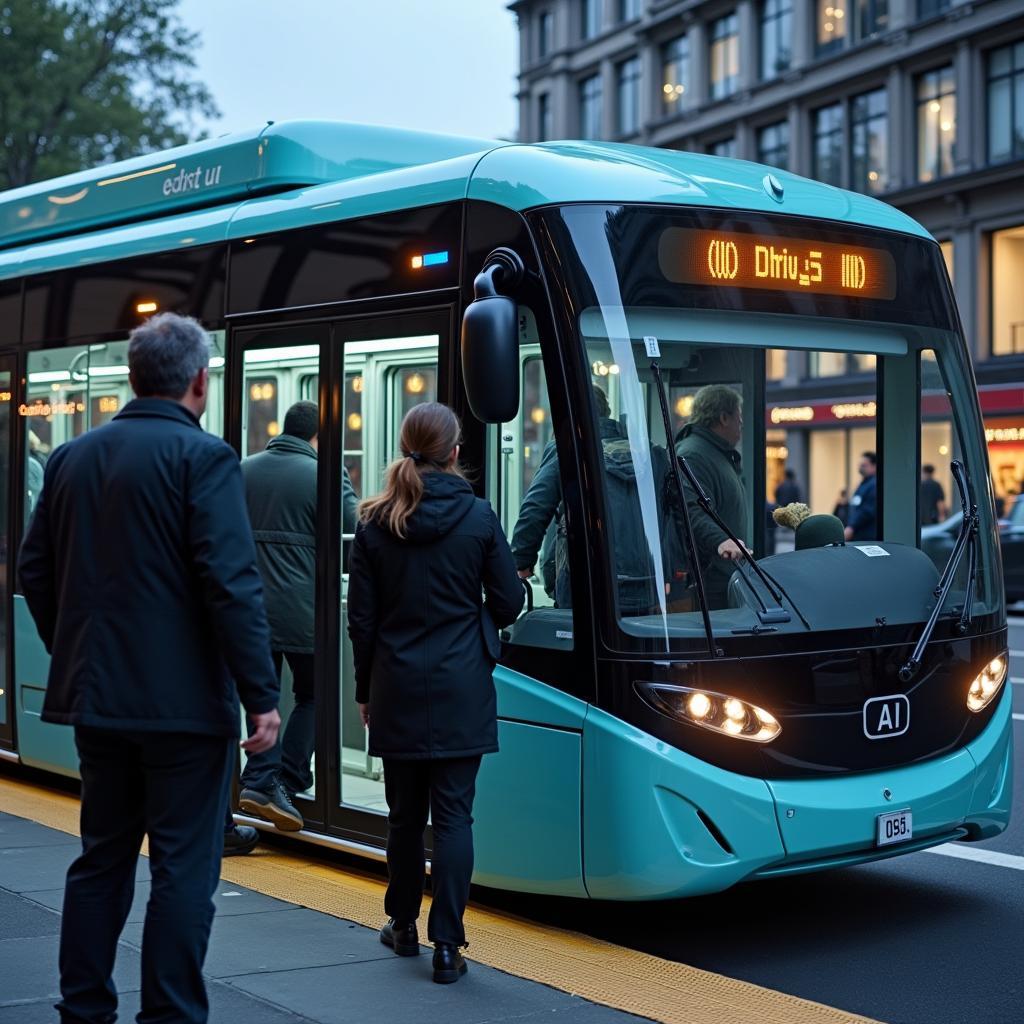The topic of artificial intelligence’s impact on public transportation has become increasingly prevalent in IELTS Writing Task 2 examinations. Based on recent test reports and analysis from reputable IELTS preparation websites, this theme has appeared multiple times in various forms, particularly in questions about technological advancement and urban development. Similar to The impact of AI on urban planning, this topic reflects the growing influence of AI in our daily lives.
Nội dung bài viết
Task Analysis
Some people believe that artificial intelligence (AI) will revolutionize public transport systems and make them more efficient. Others argue that implementing AI in public transport could lead to job losses and safety concerns. Discuss both views and give your opinion.
This question requires candidates to:
- Examine both positive and negative perspectives
- Provide relevant examples and supporting evidence
- Express and justify a personal opinion
- Follow a clear essay structure
Sample Essay 1 (Band 8.5)
The integration of artificial intelligence into public transportation has sparked considerable debate regarding its potential benefits and drawbacks. While some maintain that AI will enhance efficiency and service quality, others express concerns about employment implications and safety risks. In my view, although these concerns merit attention, the advantages of AI implementation significantly outweigh the potential disadvantages.
Proponents of AI in public transport systems highlight several compelling benefits. Firstly, AI-powered systems can optimize route planning and scheduling, reducing waiting times and improving service reliability. For instance, cities like Singapore have implemented AI algorithms that analyze real-time passenger data to adjust bus frequencies during peak hours, resulting in a 30% reduction in waiting times. Additionally, AI can enhance safety through advanced monitoring systems and predictive maintenance, preventing accidents and reducing system downtime.
However, critics raise valid concerns about the societal impact of AI adoption. The primary argument centers around potential job displacement, as automated systems may replace human drivers and operators. Furthermore, there are apprehensions about system vulnerabilities to technical failures or cyber-attacks, which could potentially compromise passenger safety. As we’ve seen in The role of technology in urban development, such technological transitions often present complex challenges.
Nevertheless, I believe the benefits of AI integration outweigh these concerns. The improvement in service efficiency and safety can significantly enhance the quality of public transportation, making it a more attractive alternative to private vehicles, thereby contributing to The challenges of reducing air pollution. Moreover, while some jobs may be displaced, new opportunities will emerge in system maintenance, monitoring, and development. The key lies in managing this transition through proper training programs and gradual implementation.
In conclusion, while the concerns about AI implementation in public transport deserve consideration, the potential benefits for efficiency, safety, and environmental sustainability make it a worthwhile pursuit. The focus should be on responsible implementation that addresses both technological advancement and social considerations.

Sample Essay 2 (Band 6.5)
Nowadays, many people have different opinions about using AI in public transport. Some people think it is good because it makes transport better, but others worry about jobs and safety. I will discuss both sides and give my opinion.
On the positive side, AI can help make public transport more efficient. Buses and trains can run on time because computers can control everything. Also, AI can help prevent accidents by watching everything carefully. This means fewer delays and safer journeys for passengers.
However, there are some problems too. Many people who work as drivers might lose their jobs if computers do all the work. Some people also worry that computers might break down or get hacked, which could be dangerous. These are important things to think about.
In my opinion, I think AI is good for public transport, but we need to be careful. We should train workers to do new jobs with computers. Also, we should make sure the systems are safe and cannot be easily broken.
To conclude, AI in public transport has both good and bad points. I believe we should use it but make sure we solve the problems it might cause. This way, everyone can benefit from better public transport.
Analysis of Band Scores
Band 8.5 Essay Analysis:
- Sophisticated vocabulary and complex structures
- Clear progression of ideas with strong cohesion
- Well-developed arguments with relevant examples
- Effective use of topic-specific vocabulary
- Natural paragraph transitions
Band 6.5 Essay Analysis:
- Basic vocabulary with some repetition
- Simple sentence structures
- Clear but basic organization
- Limited range of linking devices
- Some development of ideas but lacking depth
Key Vocabulary
- Integration (n) /ˌɪntɪˈɡreɪʃn/ – the process of combining things
- Optimization (n) /ˌɒptɪmaɪˈzeɪʃn/ – making something as effective as possible
- Predictive maintenance (n) /prɪˈdɪktɪv ˈmeɪntənəns/ – anticipatory upkeep
- Implementation (n) /ˌɪmplɪmenˈteɪʃn/ – the process of putting a plan into action
- Vulnerability (n) /ˌvʌlnərəˈbɪləti/ – susceptibility to harm
For practice, try writing your own essay on this topic and share it in the comments. Future IELTS topics might include AI’s impact on other transportation aspects like traffic management or environmental sustainability.